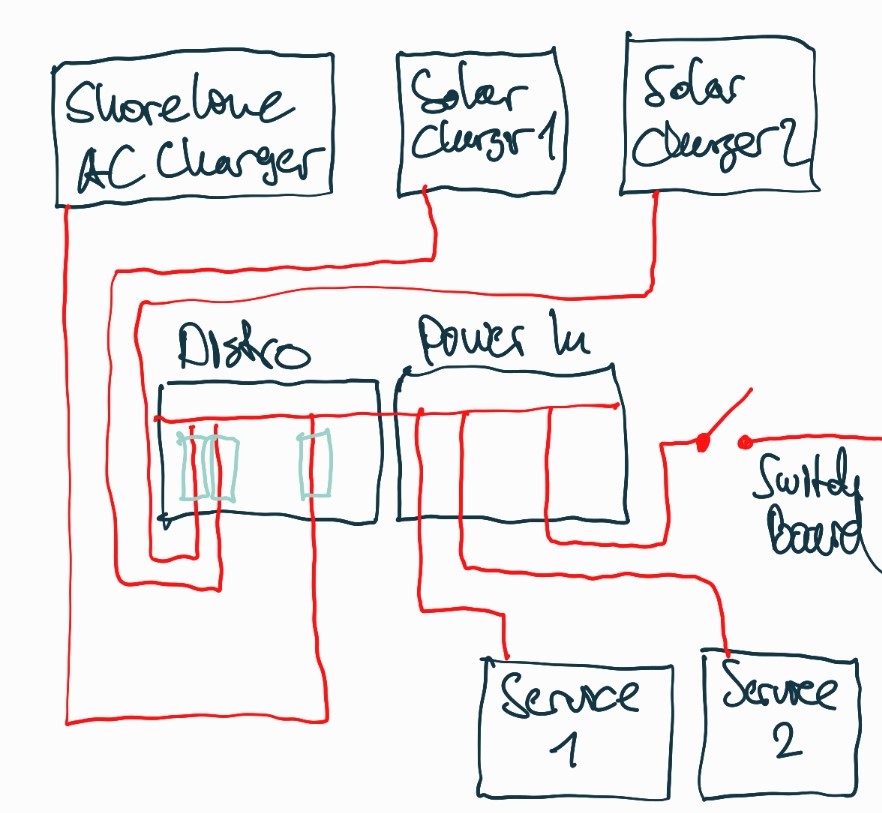Hi,
I'm trying to assess the potential Lynx distribution system value-add for my 12V battery wiring plans.
General Q: Where is the major value add of the Lynx power in or distributor VS just a normal bus bar (other than the distributor having fuse holders integrated) IF the intent is not to use the rest of the Lynx compentents like the smart shunt? The latter is not an option unfortunately, as a Bluetooth connection is mandatory.
Use-cases at hand:
Charging two starter battery bank with one Victron Blue Smart output
- Currently two batteries
- Currently connected in parallel and charger connected to one battery
- Would be nice to have individual & fused connections via a bus bar OR a Lynx component to charge both batteries simultaneously
- VSR to bus bar/ Lynx to connect starter and service bank?
Charging service battery bank with the other Victron Blue Smart + 2 solar MPPT arrays
- Currently two batteries, 4 planned in the near future
- Currently connected in parallel and chargers (Blue Smart and Solar) connected to one battery
- Power goes to a single DC switchboard for all house electrics
- Would be nice to have individual & fused connections via a bus bar OR a Lynx component to charge batteries simultaneously
- VSR to bus bar/ Lynx to connect starter and service bank?
Hope that all makes sense without wiring diagrams.
To be clear: I totally get the value add if the entire Lynx system incl. shunt is an option, as well as for a larger battery systems with several DC loads as well. But unsure if "overkill" for my plans. Keen to hear your thoughts!
Thanks in advance!



